Tale of a City

WHAT MAKES A CITY?
‘TALE OF A CITY’- an exhibition that aims to celebrate the essence of Kathmandu Valley
- WHAT: TALE OF A CITY
- WHEN: 29th OCTOBER 2021 (to 29th NOVEMBER 2021)
- WHERE: Siddhartha Art Gallery
O my beloved!
Ripping apart the veil of long sleep
I’ve awoken after an age
You were also asleep!
In the long sleep of delusion
Awake now!
Recognize and fold me in your embrace
To rub rose water
On your lethargic spine
I have come
O My Beloved Kantipuri by Phulman Bal
From “Whose City Is This?”
‘Rome wasn’t built in a day.’ Neither was Kathmandu Valley. ‘Tale of a City’ is an exhibition featuring multiple artists who are working with multiple mediums. They have come together to explore ideas that make Kathmandu Valley a unique hodgepodge of culture, tradition, and heritage that it was in the past (and is today).
According to Sujan Dangol, one of the artists involved in ‘Tale of a City’, the exhibition is a collective movement that aims to capture their experiences with Kathmandu Valley.
The exhibition features eight artists—Abhishek Shah, Anil Ranjit, Jagdish Upadhyay, Rupesh Man Singh, Sharmila Shrestha, Sujan Dangol, Ashesh Dangol and Jattadhari Bhajan Kala— working on multiple mediums: pen and ink drawings, photographs, video, and rice straw art. Moreover, this exhibition aims to tread beyond the static medium. The opening will feature more dynamic forms like performance art, music, and food.
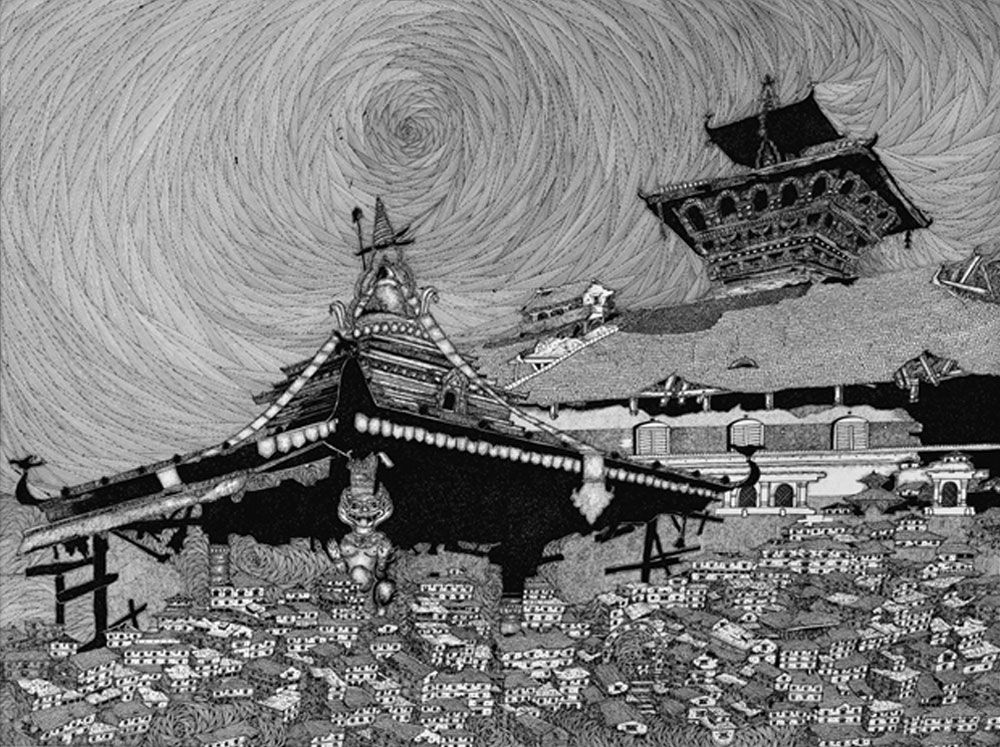
Chaitya
31.5’’x 41’’
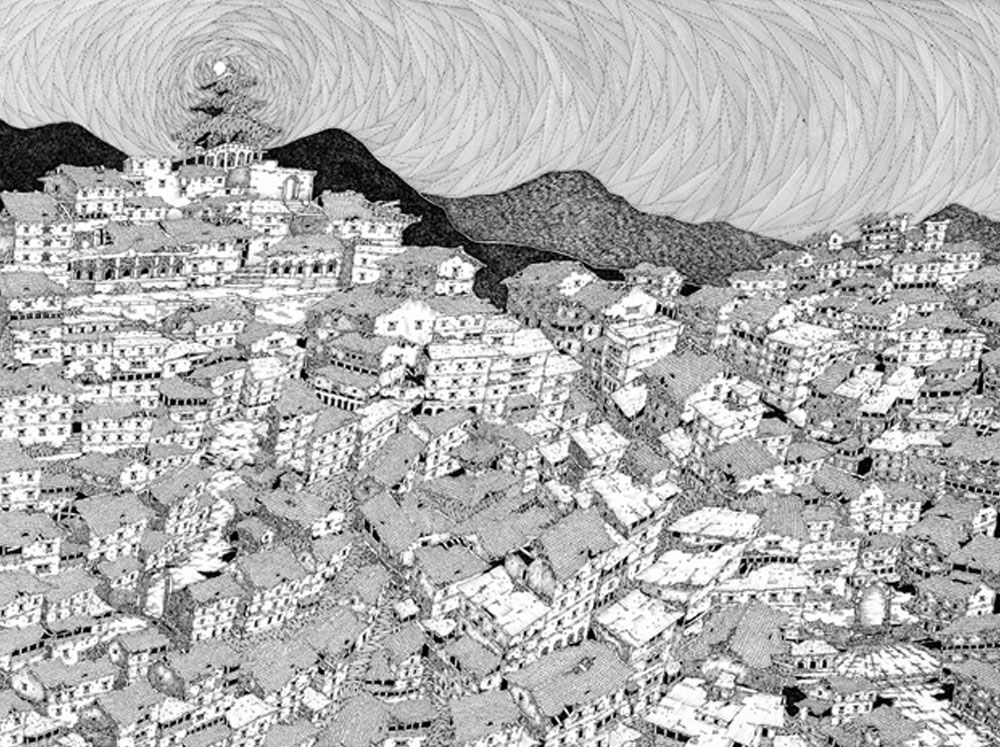
Mystic Palace I
31.5’’x 41’’
As an exhibition reflecting on the nostalgia of the Kathmandu Valley, it is inherently tied to Newar culture and heritage. “The word ‘Newar’ which essentially means “inhabitants of the valley” is more than just a word that describes a certain community. We see it as a way of life,” says Dangol. “And we want to celebrate this way of life in the exhibition.”
Kathmandu Valley is a place with a colorful history. From the stories of Manjushree to sacred Khayh dance, the valley holds more dimensions than just socio-economic or political ones, the artists believe it is also a place of mysticism and spiritualism. This is the main reason they titled the exhibition ‘Tale of a city’—highlighting how it has its own, intangible yet powerful story to tell.
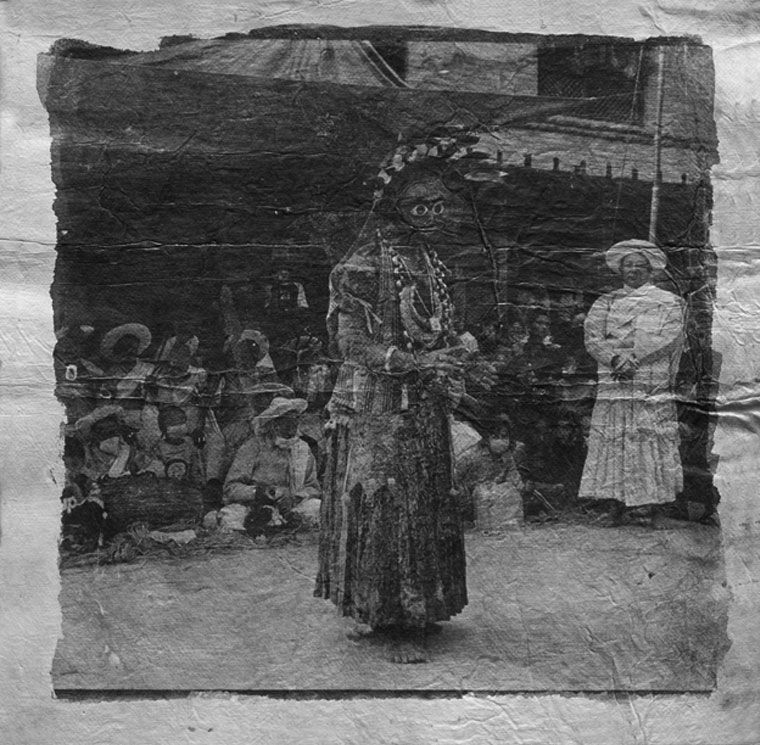
Mystic Symbols
12” x 12’’
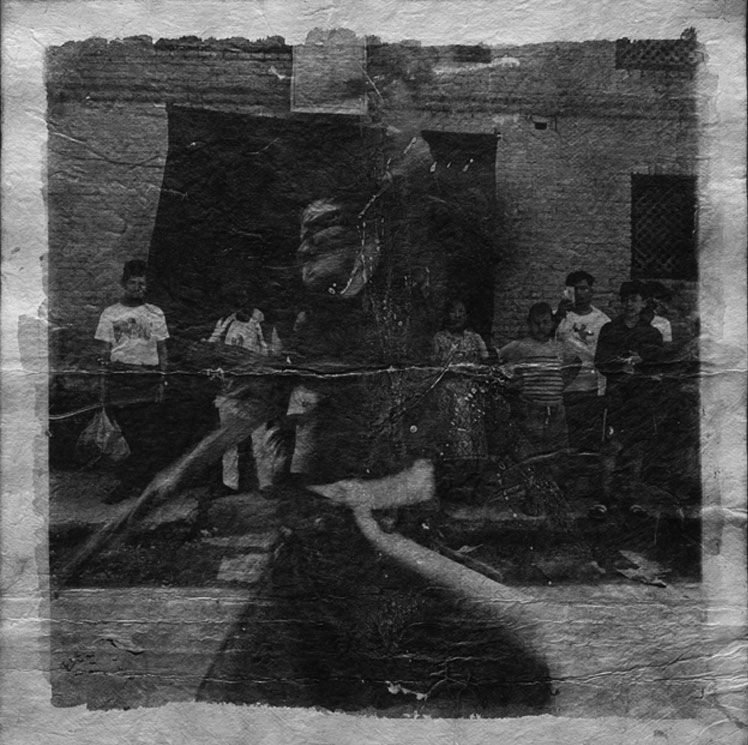
Mystic Symbols
12” x 12’’
Similarly, the artists describe the exhibition as retaliation against what they call “concretization”, the process through which the Valley is becoming increasingly built-up, haphazard, and losing touch with the roots of its culture. Their aim is to redirect and move back to values that celebrate liveliness, multiculturalism, and artistic liberation. “We want to evoke a feeling of coming back home,” claims Dangol.
Lastly, ‘Tale of a City’ hopes to become more than a collection of works that are displayed at the gallery for a given time. It wants to encourage discourses, conversations, and an overall reorientation of seemingly “modern” values to ideas that are indigenous, historical, and our own.

Kalki Avatar
31.5’’x 31.5’’
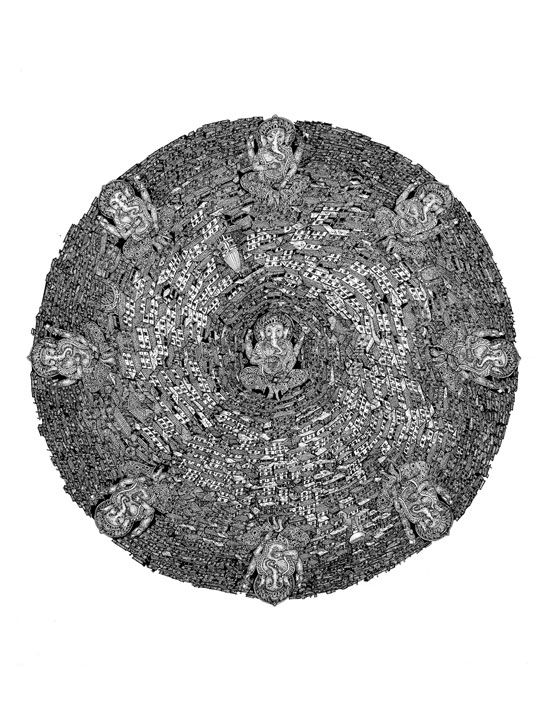
Circle
31.5’’x 31.5’’
Kathmandu As A Dreamscape
Sujan Dangol’s Kathmandu is dreamy. It is mystical. Kalki—one of the avatars of Lord Vishnu—flies over it. The Baraha is shown to be balancing it on his head. The temples and chaityas seem to be inhabited by spirits. His Kathmandu is more than a concrete jungle, it is a place for gods.
Dangol’s 24 pen and ink exhibits are the result of four years of continuous effort. As he was born and brought up in Kathmandu, he has always felt a deep attachment to the city. “As an artist, I wanted to give back to the city that brought me up and made me what I am today,” he says.
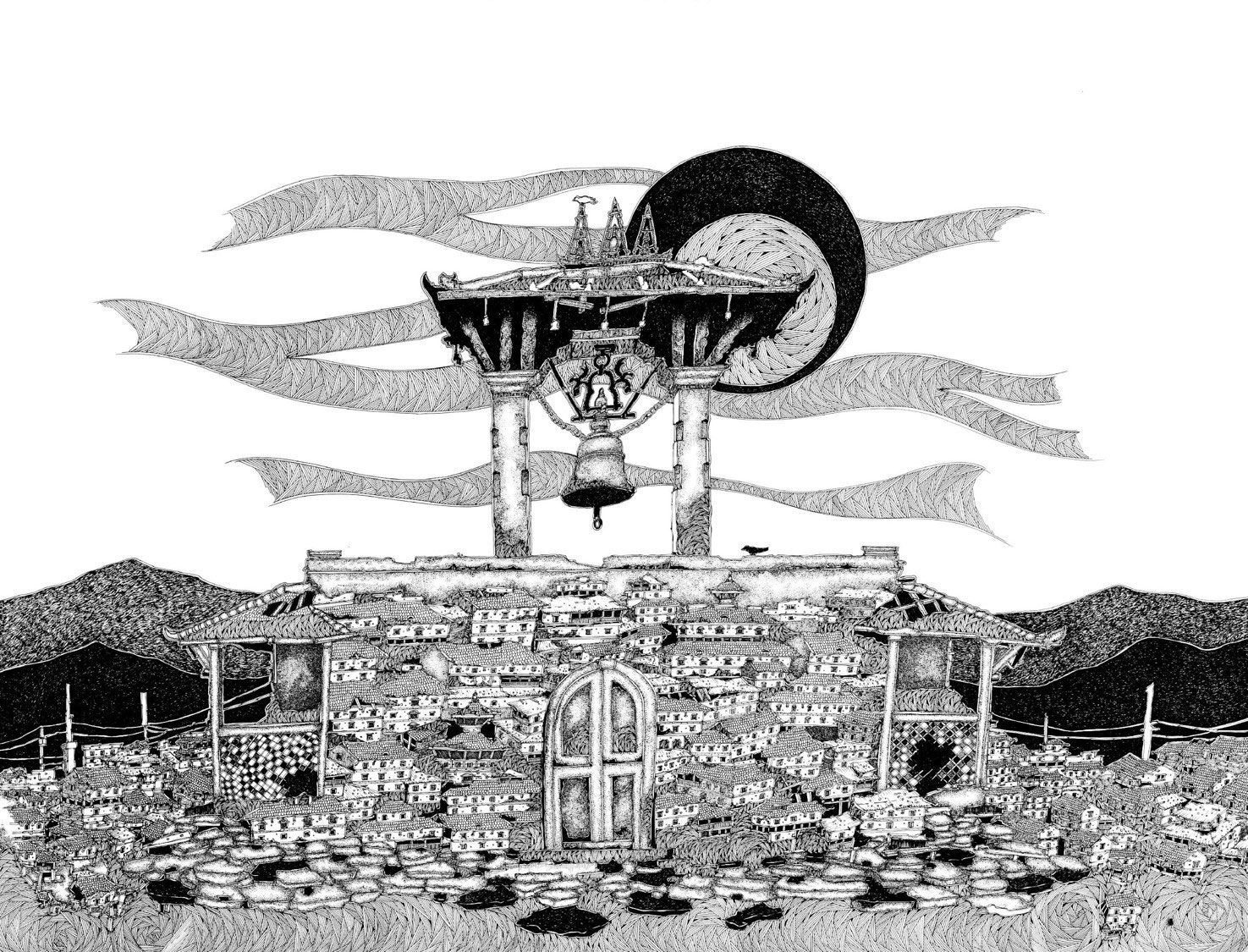
Big Bell
It is probably because of this that Dangol’s Kathmandu doesn’t mirror the present Kathmandu. The houses in the drawings are traditional with slanted roofs, the windows are thick and made of wood. There are no pitched roads or electricity poles or tall concrete buildings. This Kathmandu boasts temples, chaityas, clean rivers, and ponds.
Dangol’s portrayal of the city is what he saw as a child. A city that exists in stories where gods and deities hover over it. A city that is in sync with its mystical and spiritual past.
Lastly, Dangol’s works are an attempt to rekindle his memories of his past and in turn, remind others how beautiful Kathmandu used to be.
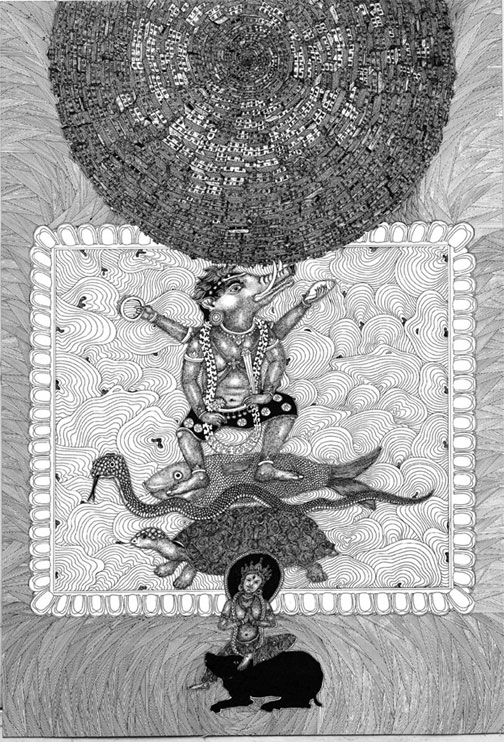
Baraha
32X44
Sujan Dangol
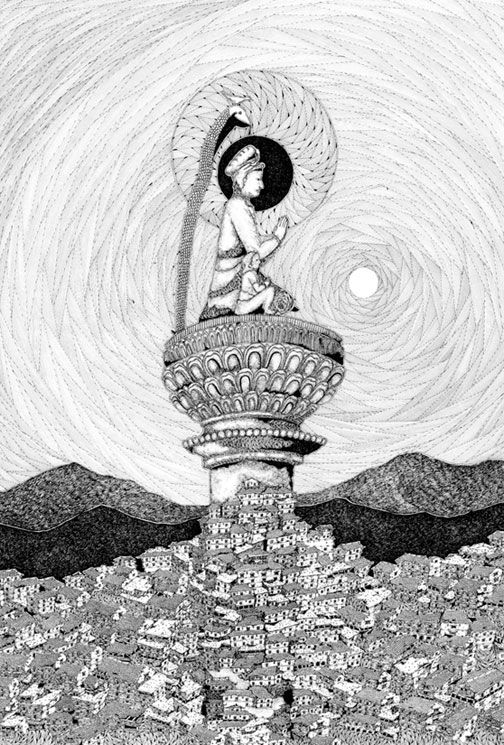
Raja Pratap Malla
38X48
Sujan Dangol
The Mysteries of Khokhana
Khokhana is a small settlement on the outskirts of Patan. Despite the rapid urbanization, Khokhana has been able to preserve its buildings, culture, and tradition to a certain extent. And though part of the Kathmandu Valley, it has its unique rites and rituals, different from everyone else’s.
The people at Khokhana don’t worship deities or figures, instead, they worship symbols. These symbols have been passed down from generations and still hold an important place in rituals done by the people.
The artists at Fim Foundry—Jagadish Upadhyay, Abhisekh Shah, and Rupesh Man Singh—were fascinated by these symbols. “The meaning behind these symbols is still a piece of mystery to us,” says Upadhyay, “and yet, we were drawn to them as they are present all over Khokhana.”
As connoisseurs of analog photography, the team decided to pay homage to these symbols by using a silver gelatin emulsion on lokta paper (also known as Nepali paper). To make these prints was a delicate affair, according to the artists. They had to combat the fragility of the lokta paper, play with chemicals and techniques that would allow them to capture the most out of the photographs they’ve captured. These topped off by vermillion marks of the symbols pay a perfect tribute to the mysteries of Khokhana.
The nine prints each have their symbols and stories to tell. With the help of this work, they are preserving two gifts of the past: analog photography as well as the ancient traditions of Khokhana.
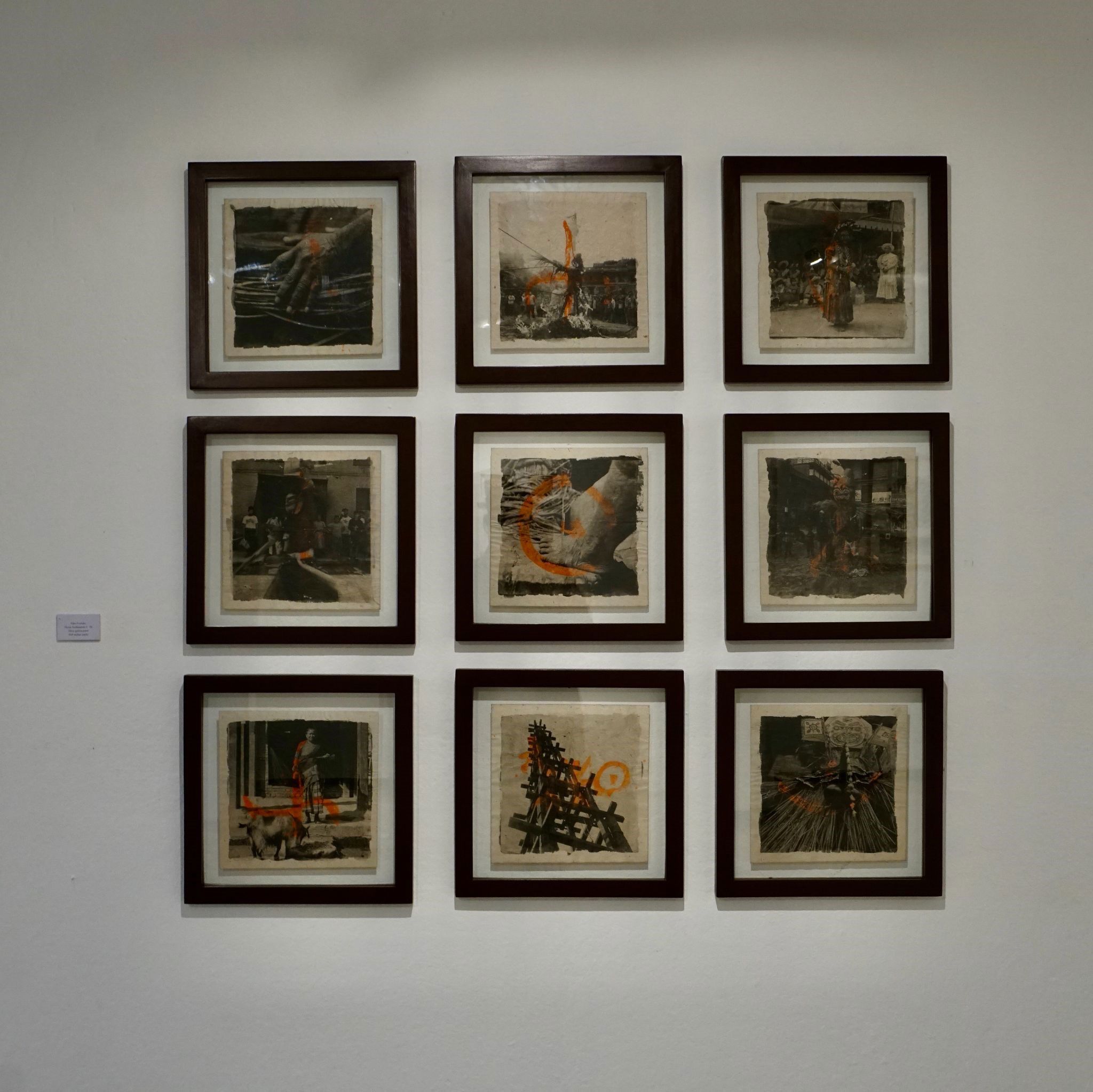
Mystic Kathmandu I-IX
Seeds As Symbols Of Life
Seeds are a perfect analogy of life. Like seeds, we are all born small and fragile, yet hold great powers to invent, discover, and create. Though seeds seem small and insignificant, given the right circumstance, they can grow tall, bear fruit, and thrive.
Sharmila Shrestha's exhibition 'Seeds' reflects on the power that seeds hold. “I was going through an artist block before creating this piece,” says Shrestha. “But 'Seeds' gave my passion for art a newfound direction.”
The exhibit includes nine pieces of work, each featuring circular or square rice-staw bases above which different types of seeds are creatively placed. Grains of rice, kidney beans, black sesame, and soybeans are placed gracefully in different patterns. These seeds are grown extensively in the valley and are used frequently in Nepalese households.
With her work, Shrestha wants to shed light on how people have resorted to stifling the true potential of seeds to breed only certain qualities that we think are beneficial to us. She wants to remind us how intelligent seeds are and how, despite their size, they hold the incredible ability to create life.
Shrestha’s piece muses on the potential seeds hold and how they juxtapose into the cycle of life itself.
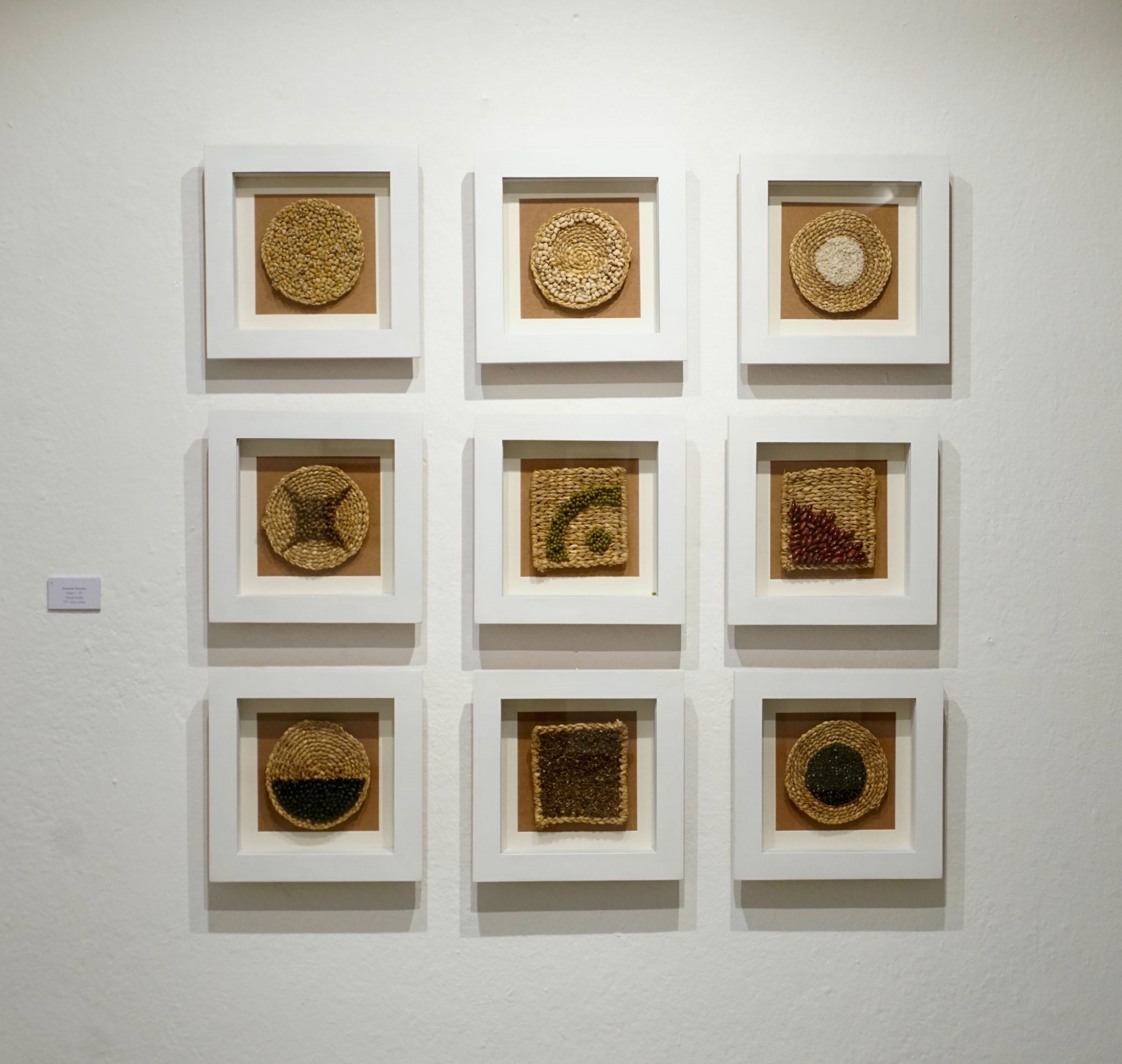
Seeds I-IX
Mixed Media
7X7
Celebrating The Valley’s Fertility
Digital photographer, Anil Ranjit’s work is also closely tied to Khokhana. Described as “a medieval Newari town frozen in time” (ECS, 2018). Khokhana is the perfect place to come across festivals, practices, and traditions that belong to the past-Kathmandu. Ranjit’s monochrome photographs focus on a more subtle yet incredibly important aspect of Khokhana and in turn, the valley—its fertility.
Despite the valley’s industrialization which seems to have concretized and mechanized everything, people in Khokhana still use the valley’s abundant fertility to grow crops and other produce. They are still deeply connected to traditional agricultural practices. And that is what captivated Ranjit. Similarly, he was also deeply affected by seeing how the fertile lands of Khokhana that have provided sustenance for people for so long are being taken over by powerful forces in the name of development.
Ranjit is a great believer in art with a conscience. He believes a work of art is only meaningful if it wants to narrate something. And so, his work alludes to the wonderful connection between the people of Khokhana and their land. This is accompanied by forewarning that misusing fertile lands for development and urbanization can have grave and unforeseen consequences.
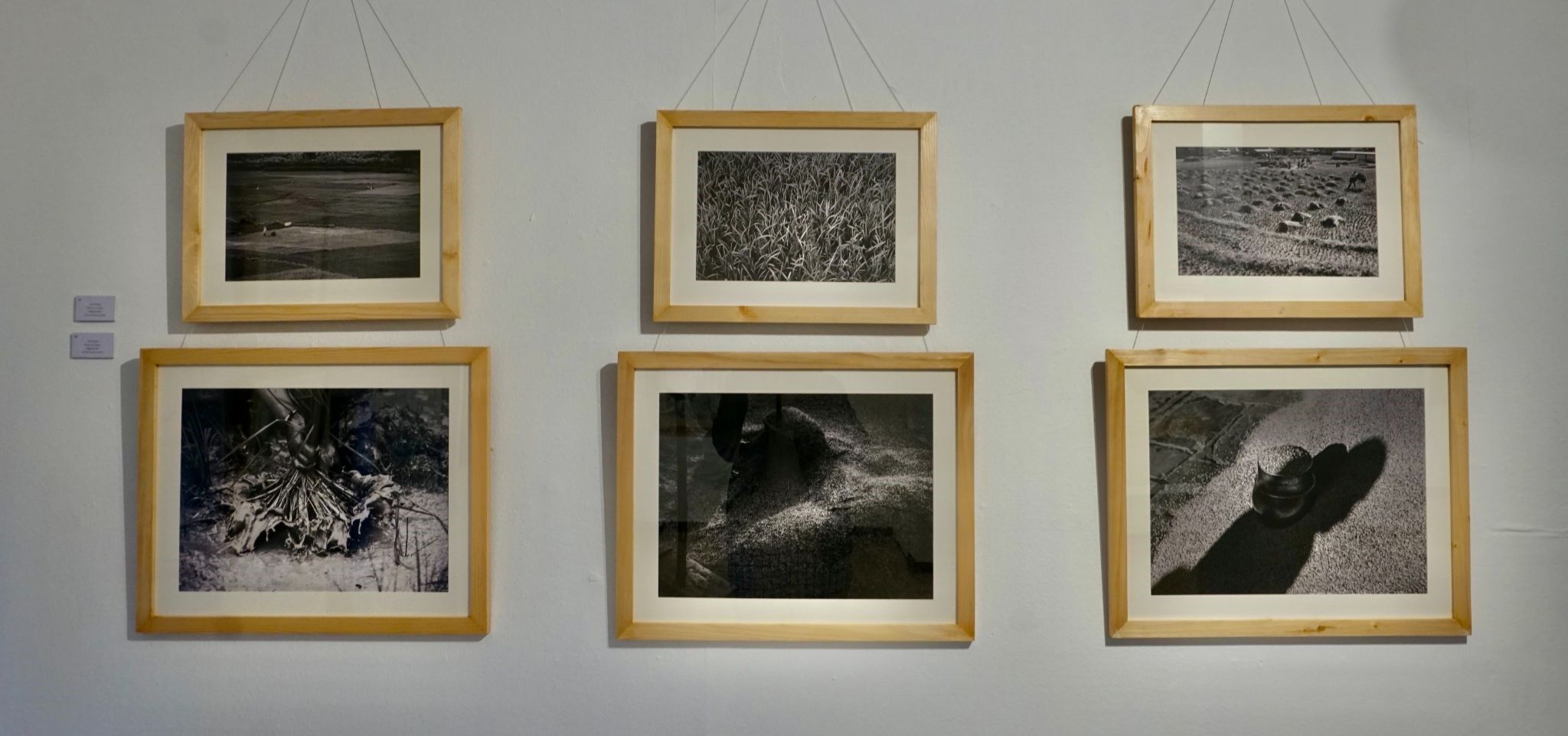
Bu:jya I
Bu:jya II
16X20
Digital print
Anil Ranjit
A Jatra To Remember
Like Film Foundry and Anil Ranjit, Ashesh Dangol’s work also ties closely to Khokhana. Dangol’s exhibits include vibrant and colorful prints of Shikali Jatra—a one-of-a-kind jatra from Khokhana.
While most of Nepal is preparing to celebrate Dashain, Khokhana residents prepare for an annual five-day festival dedicated to Goddess Shikali. Dangol, in his digital prints, has managed to capture the different colors and dimensions of this festival.
From the priests clad in all-white walking towards the Shikali temple to the perfect shot of diety Astabhairav up in the air, Dangol has managed to capture the very essence of what makes jatras so powerful—the people. In his pictures, one can see the intensity and devotion with which people are trying their very best to keep their traditions afloat.
Dangol explains that he was captivated by the force with which Khokhana residents were keeping the Shikali jatra alive. This compelled him to think of his role as a native of the valley, and his contribution has manifested itself in the form of these lively photographs.

The Feast—blessings from the ancestors
16X12
Ashesh Dangol